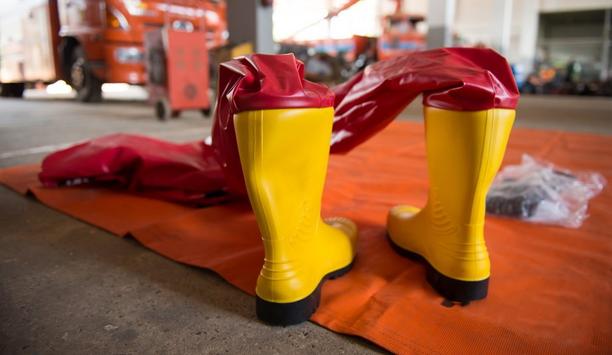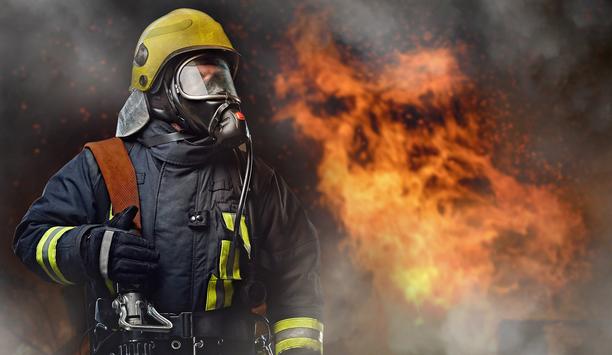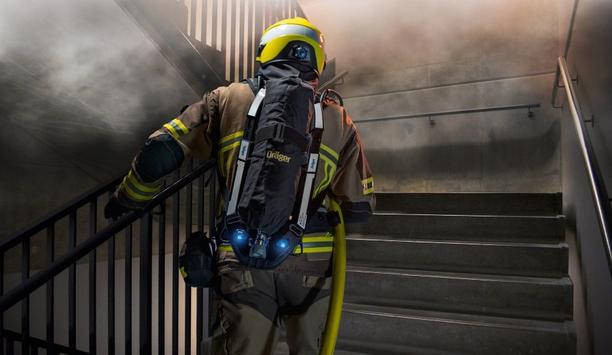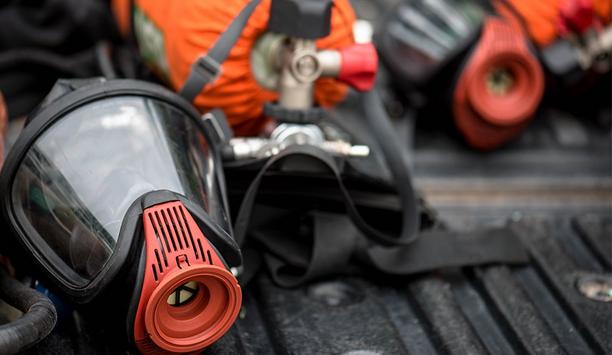The letters ‘FR’ have many meanings, including flame resistant, flame retardant, fire resistant and fire retardant, but is there a difference? And which FR is the right FR for a particular firefighters and rescue team?
The truth is, these terms are used interchangeably and there is no clear standard or definition that backs up any of these phrases. What matters when looking to choose the right FR protection for the team is understanding and specifying garments that meet the right FR and/or related standards.
To help, Reece Buchner, Technical Sales Manager at FlamePro, a British specialist manufacturer of firefighter and other life-saving FR garments, explains some of the standards and regulations that a fire and rescue service needs to be aware of when deciding on the right PPE for their team.
EN ISO 14116 - Protection against flame and clothing
This standard applies to garments that protect against occasional and brief contact with small igniting flames, in circumstances where there is no significant heat hazard. Clothing manufactured to this standard is made from flame retardant materials so that if the material comes into contact with a flame, it will only continue to burn for a limited amount of time. After removal from the flame, the material will stop burning.
Any garments that are compliant with this standard are given a limited flame spread index of 1, 2 or 3
Therefore, clothing in this category should not be worn to protect against convective heat, radiant heat and molten metal or similar higher risk hazards. Any garments that are compliant with this standard are given a limited flame spread index of 1, 2 or 3, in which index 3 is highest and provides the most protection. If the index is 1 (the lowest level), then the garment may not have skin contact (such as the neck or wrists), and can only be used outside a garment with an index 2 or 3 rating.
EN ISO 11612 - Clothing to protect against heat and flame
This standard is similar to 14116 above, however it offers a higher level of protection for wearers by ensuring protection against risks such as molten metal.
The performance requirements set out in ISO 11612:2015 are applicable to protective clothing for a wide range uses, where there is a need for clothing with limited flame spread properties and where the user can be exposed to radiant, convective, contact heat or to molten metal splashes. It’s also worth noting that this standard has replaced the previous EN 531.
EN 469:2005 – Protective clothing for firefighters
EN 469:2005 provides the minimum requirements for protective firefighter garments, whilst fighting fires and any associated activities such as rescue work.
The standard mainly covers how well the PPE can limit the spread of flames on both the outer shell and internal lining as well as its resistance to the penetration of heat from flames (or a radiant source) through all layers of the component material. There are two levels of the standard (1 and 2), with level 1 indicating the lower level of protection.
ISO 18639 – PPE ensembles for firefighters
ISO 18639 is specific to firefighters and does not cover PPE used to protect against chemical hazards
The ISO 18639 series of standards specify requirements of PPE specifically designed to protect firefighters from injury and/or loss of life, while engaged in specific rescue activities.
ISO 18639 is specific to firefighters and does not cover PPE used to protect against chemical and biological hazards, except against short term and accidental exposures while engaged in rescue activities.
Because this standard covers so much, it is split into several sections, each covering the specific requirements for different firefighter PPE garments:
- ISO 18639 – 1 – General overarching guidelines
- ISO 18639 – 3 – Specifies test methods
- ISO 18639 – 4 - Gloves
- ISO 18639 – 5 - Helmet
- ISO 18639 – 6 – Footwear
EN 1149-5 – Protective clothing with electrostatic properties
This standard applies to garments worn by operatives who encounter risks of explosion (ATEX Environments), such as in petrochemical refineries and fuel distribution companies.
The standard ensures any garments provide the wearer with electrostatic dissipative clothing with reduced risk of sparking – the outer fabrics of these garments are made from antistatic materials and components. The garment should be used as part of a total earthed system to avoid combustible discharges.
The outer fabric of the garment must be anti-static (AST) and also has to cover all the other non-AST layers permanently.
EN ISO 11611:2015 – Protective clothing for use in welding
Class 1 protects against less hazardous welding techniques and situations
As the name of this standard suggests, this standard is important to consider when specifying PPE for any workers that are to carry out welding, and other allied processes with comparable risks.
This standard ensures garments provide protection against small splashes of molten metal, and brief contact with flame, only when a worker is undertaking welding or similar processes.
Under this standard, garments are categorised into one of two classes. Class 1 protects against less hazardous welding techniques and situations, which cause lower spatter and radiant heat, whereas Class 2 protects against riskier welding techniques and situations, which causes higher levels of spatter and radiant heat.
EN 15090 – Footwear for firefighters
This standard specifies minimum requirements and test methods for the performance of three types of footwear for firefighters: General-purpose rescue (F1), fire rescue (F2) and hazardous materials emergencies (F3).
The requirements for each category differ from each other, so it’s important to know the difference, when looking to purchase footwear. The key difference between this standard and the previously mentioned ISO 18639-6 is that ISO 18639-6 does not cover special footwear for use in other high-risk situations such as structural firefighting.
General-purpose rescue footwear (F1)
Footwear that is classed as type 1 (F1) is suitable for general-purpose rescue, fire suppression, and firefighting suppression involving a fire in vegetative fuels such as forests, crops, grass, and farmland. These garments are not required to protect against penetration, offer toe protection, or protect against chemical hazards, however these properties are optional.
Fire rescue footwear (F2)
Type 2 (F2) footwear is suitable for fire rescue, fire suppression, and property conservation in buildings, enclosed structures, vehicles, vessels, or similar properties that are involved in a fire or emergency situation. This footwear provides toe protection and protection against penetration, however it does not protect against chemical hazards.
Hazardous materials emergencies footwear (F3)
Type 3 footwear provides toe protection, protection against penetration and protection against chemical hazards
Type 3 (F3) footwear applies for emergencies involving hazardous materials, the release or potential release of hazardous chemicals that can cause loss of life, injury, or damage to property and the environment.
This category of footwear is also suitable also for fire rescue, fire suppression, and property conservation in aircraft, buildings, enclosed structures, vehicles, vessels, or similar properties, as well as all fire suppression and rescue interventions. Type 3 footwear provides toe protection, protection against penetration, and protection against chemical hazards.
EN 659 – Protective gloves for firefighters
EN 659 states the minimum performance requirements for protective gloves in all firefighting situations. More specifically, the standard details requirements for resistance to water and chemical penetration, making it applicable to not just firefighting but also workers on chemical sites and oil refineries and various other high-risk situations that are not covered by ISO 18639-4.
The key difference between EN 659 and ISO 18639-4 is that the latter only relates to specific specialist rescue activities, such as road traffic crash and urban search and rescue, while EN 659 covers all firefighting situations.
EN 443 covers firefighting helmets for uses in building and other structures. The European wide standard is in place to specify the minimum requirements for helmets to protect against the effect of impact, penetration and heat and flame.






